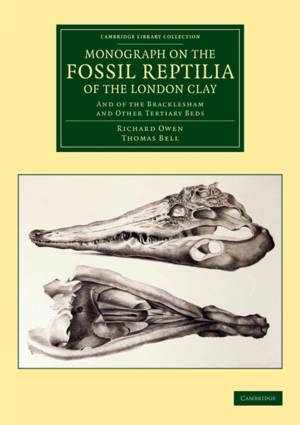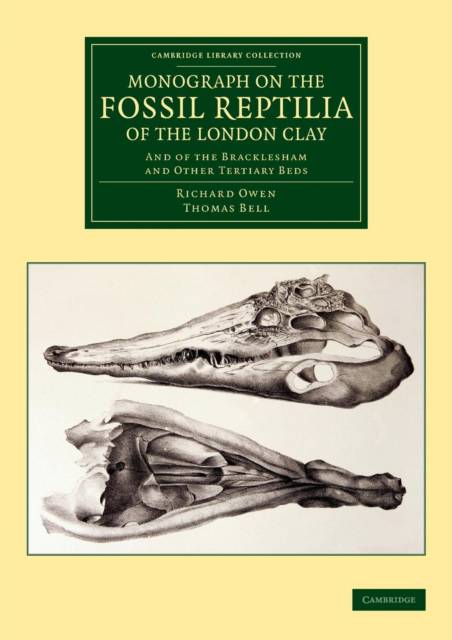
- Afhalen na 1 uur in een winkel met voorraad
- Gratis thuislevering in België vanaf € 30
- Ruim aanbod met 7 miljoen producten
- Afhalen na 1 uur in een winkel met voorraad
- Gratis thuislevering in België vanaf € 30
- Ruim aanbod met 7 miljoen producten
Zoeken
Monograph on the Fossil Reptilia of the London Clay
And of the Bracklesham and Other Tertiary Beds
Richard Owen, Thomas Bell
€ 90,45
+ 180 punten
Omschrijving
Covering a wide area of the London and Hampshire basins, the London Clay has been famous for over two hundred years as one of the richest Eocene strata in the country. In this work, first published between 1849 and 1858, Fellows of the Royal Society Richard Owen (1804-92) and Thomas Bell (1792-1880) describe their findings from among the reptilian fossils found there. The book is divided into four parts, covering chelonian, crocodilian, lacertilian and ophidian fossils, and includes an extensive section of detailed illustrations. Using his characteristic 'bone to bone' method and an emphasis on taxonomy, Owen draws some significant conclusions; he shows that some of Cuvier's classifications were wrongly extended to marine turtles, and adds to the evidence for an Eocene period much warmer than the present. The work is a fascinating example of pre-Darwinian palaeontology by two scientists later much involved in the evolutionary controversy.
Specificaties
Betrokkenen
- Auteur(s):
- Uitgeverij:
Inhoud
- Aantal bladzijden:
- 304
- Taal:
- Engels
- Reeks:
Eigenschappen
- Productcode (EAN):
- 9781108038249
- Verschijningsdatum:
- 3/11/2011
- Uitvoering:
- Paperback
- Formaat:
- Trade paperback (VS)
- Afmetingen:
- 210 mm x 297 mm
- Gewicht:
- 730 g

Alleen bij Standaard Boekhandel
+ 180 punten op je klantenkaart van Standaard Boekhandel
Beoordelingen
We publiceren alleen reviews die voldoen aan de voorwaarden voor reviews. Bekijk onze voorwaarden voor reviews.











